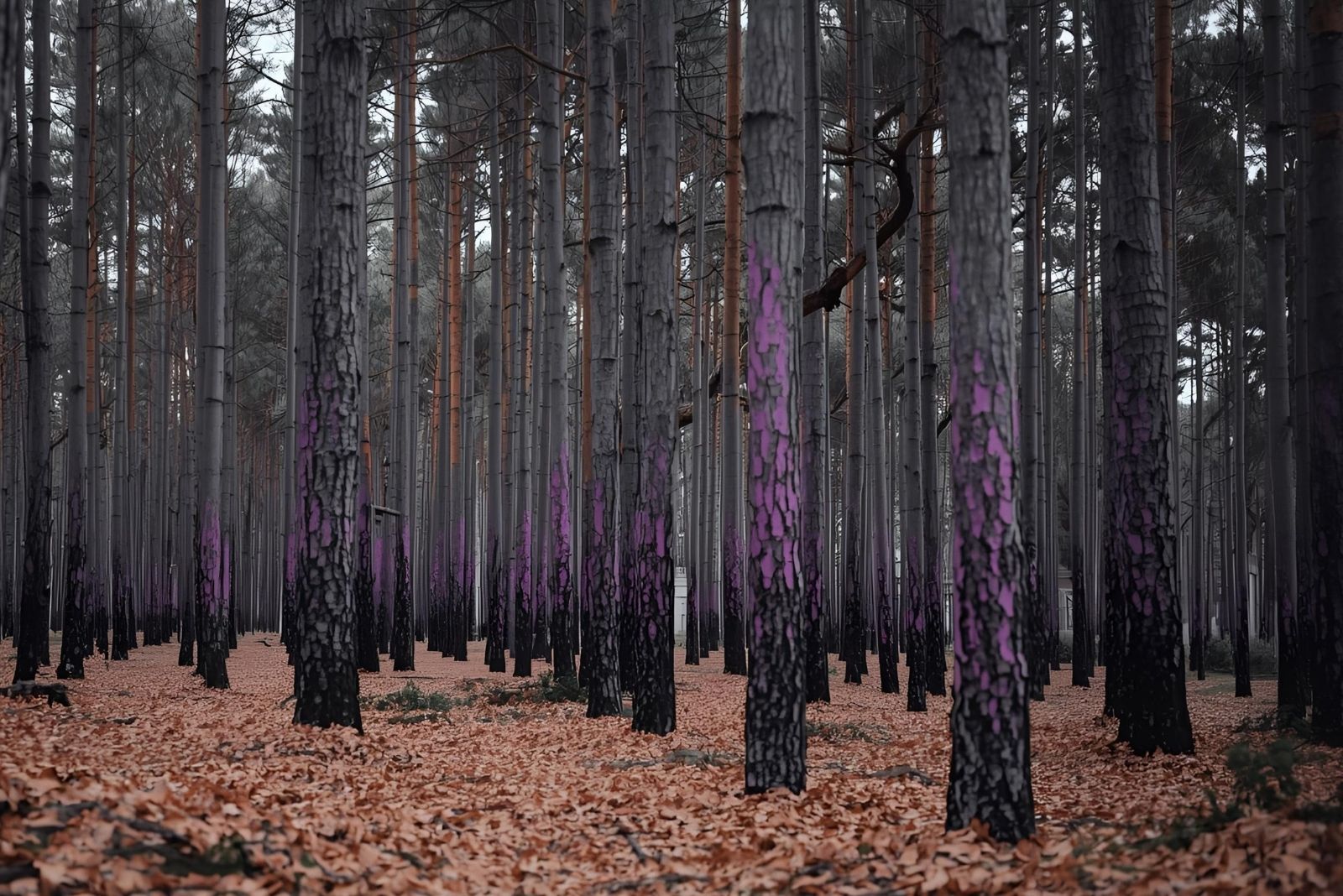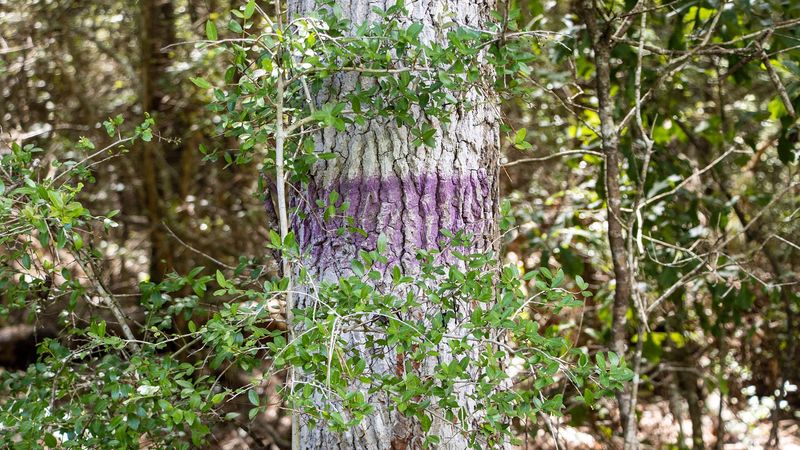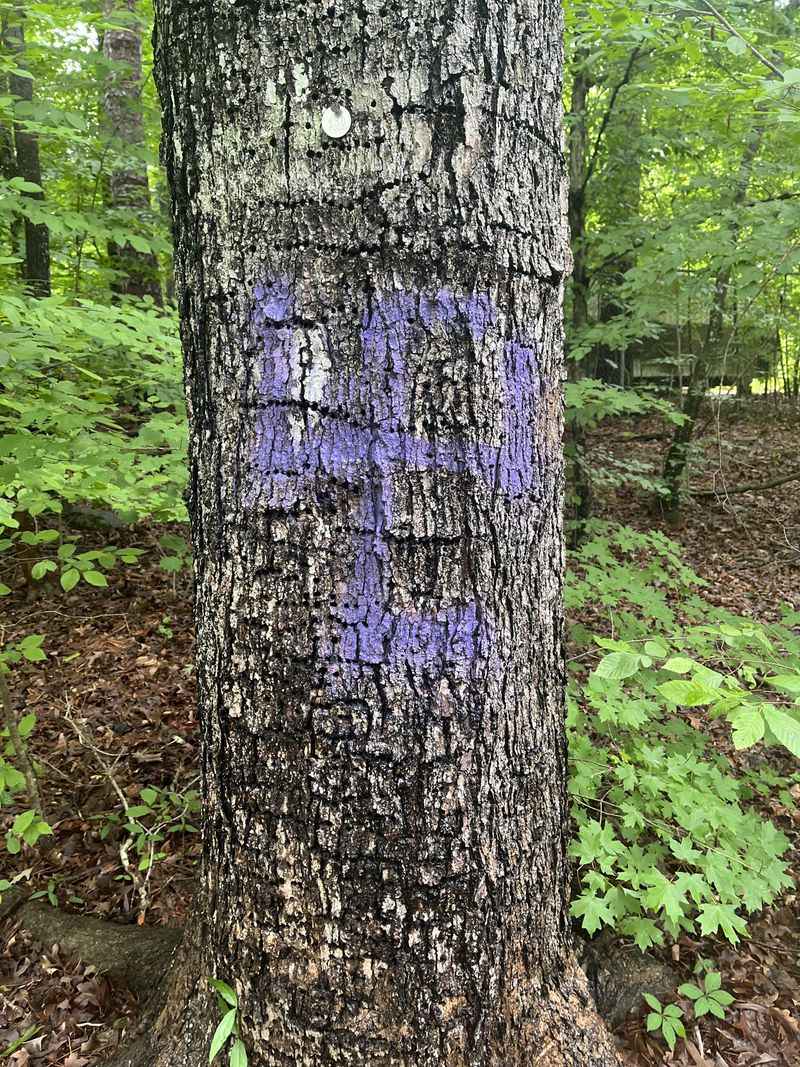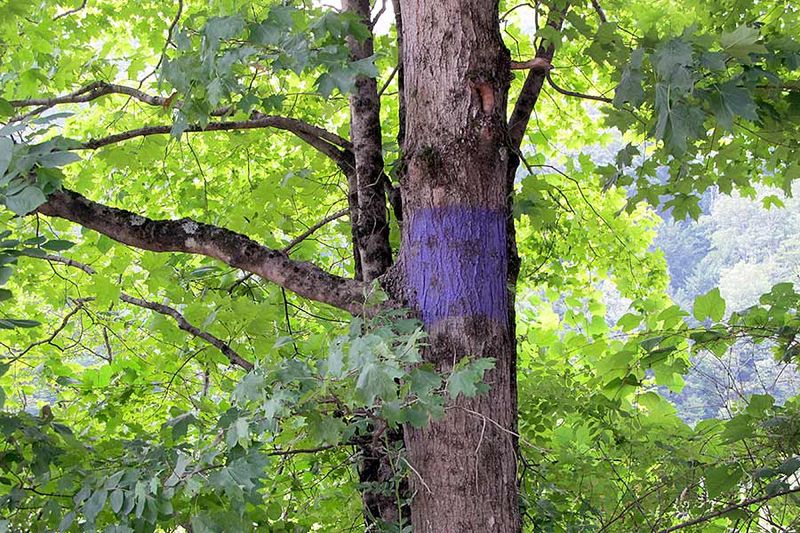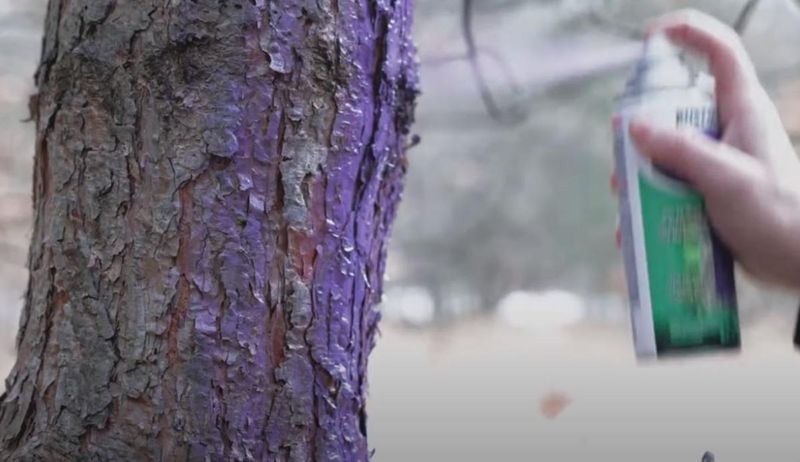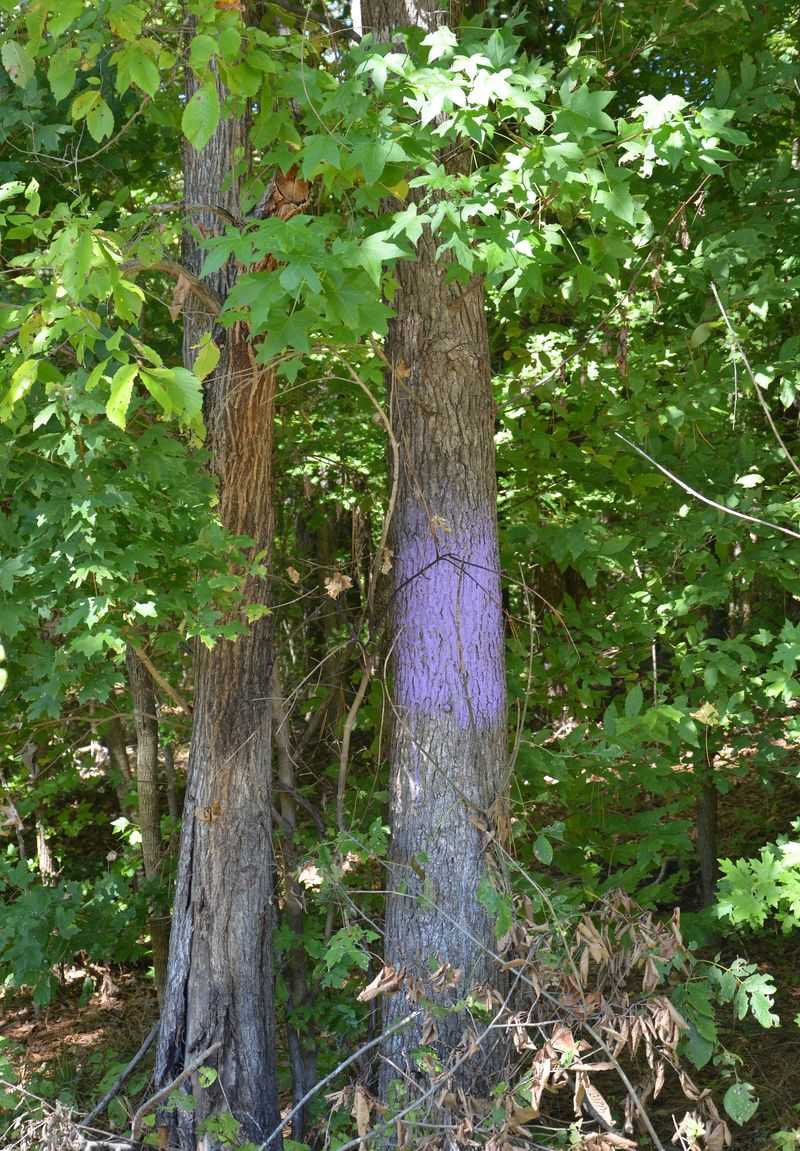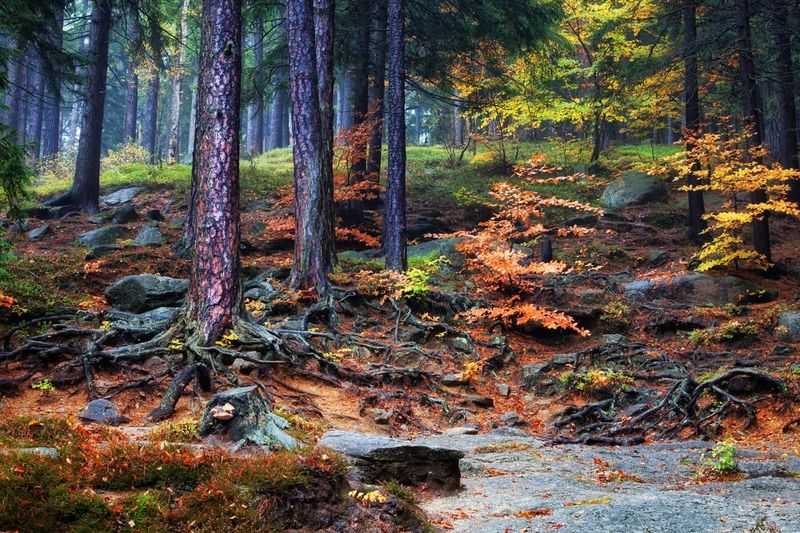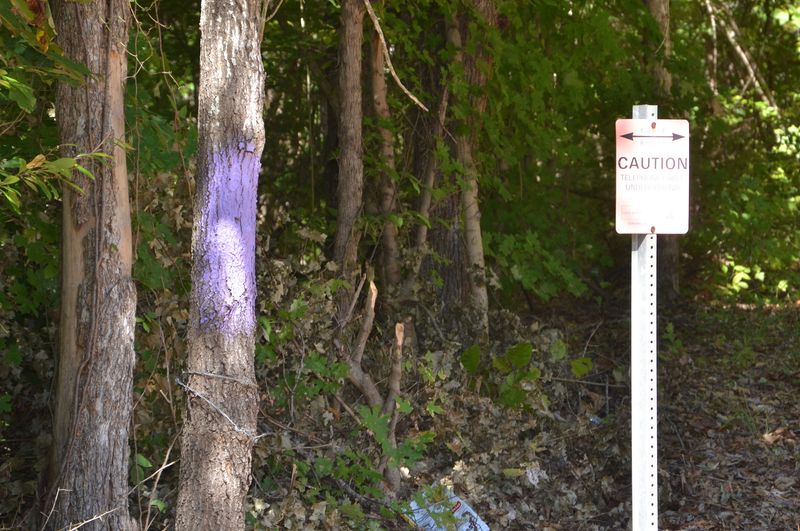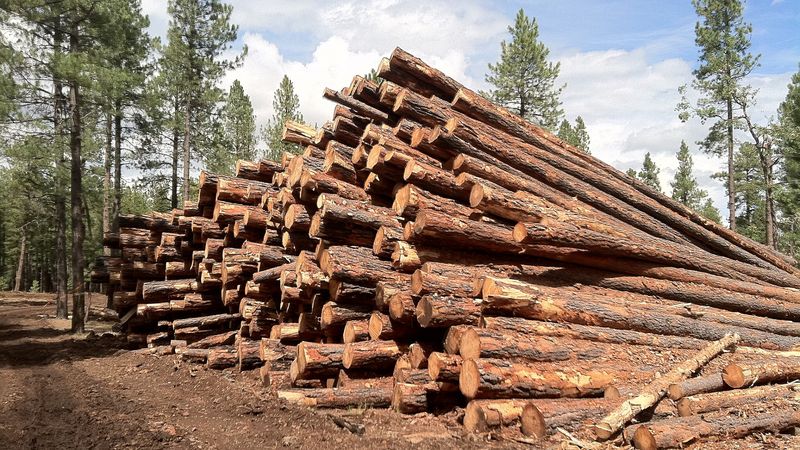Have you ever driven through Illinois and spotted trees with bright purple marks on their trunks? It might seem strange at first, but these painted trees tell important stories about property lines, conservation efforts, and even local laws.
Understanding why trees get this colorful treatment can help you navigate the outdoors more safely and respectfully. Whether you’re hiking through forests or exploring rural areas, knowing what purple paint means could change how you see the landscape around you.
1. Property Boundary Markers Replace Old-Fashioned No Trespassing Signs
Landowners across Illinois use purple paint as a legal way to mark their property boundaries without putting up traditional signs. This method saves money since signs can fade, fall down, or get stolen over time.
A single stripe of purple paint lasts for years and clearly tells people they’re entering private land. Illinois law recognizes these markings as official warnings, just like posted signs would be.
The paint must be placed at eye level and spaced no more than 100 feet apart to be legally valid throughout the state.
2. Forestry Teams Mark Trees Scheduled For Removal Or Treatment
Professional forestry crews paint trees purple to identify which ones need cutting down or special treatment for disease. This system helps logging teams work efficiently without removing the wrong trees by mistake.
When you see purple marks in managed forests around Illinois, it usually means those trees are diseased, damaged, or selected for timber harvest. The color stands out against bark and leaves, making it easy to spot from a distance.
Different forestry operations might use additional colors, but purple remains the most common choice for marking purposes.
3. Conservation Areas Use Purple To Protect Sensitive Wildlife Zones
Nature preserves and conservation areas throughout Illinois apply purple paint to trees surrounding protected wildlife habitats. These markings warn visitors to stay out of sensitive areas where endangered species nest or feed.
Rangers use this visual system to prevent people from accidentally disturbing fragile ecosystems without building expensive fencing. The painted boundaries help protect ground-nesting birds, rare plants, and animal breeding areas during critical seasons.
Respecting these purple markers means you’re helping preserve Illinois wildlife for future generations to enjoy and study.
4. Utility Companies Identify Trees Near Power Lines And Infrastructure
Electric companies and utility providers paint trees purple when they grow too close to power lines or underground cables. This alerts maintenance crews which trees need trimming or monitoring to prevent power outages.
Storms can cause marked trees to fall onto lines, creating dangerous situations and leaving neighborhoods without electricity. By tracking these trees with purple paint, utility workers in Illinois can prioritize their maintenance schedules effectively.
Homeowners sometimes see these marks appear suddenly when companies conduct routine safety inspections along their service routes.
5. Research Scientists Track Individual Trees For Long-Term Studies
University researchers and environmental scientists mark trees with purple paint to monitor their growth, health, and response to climate changes over many years. Each marked tree becomes part of valuable data collection that helps us understand forest ecosystems better.
These studies track how Illinois trees respond to droughts, diseases, and temperature shifts across different seasons. Scientists can return to the exact same trees year after year by following the purple markings.
The information gathered helps predict future forest health and guides conservation planning throughout the region.
6. Historical Trail Markers Guide Hikers Through Backcountry Routes
Some state parks and hiking areas in Illinois use purple paint on trees to mark less-traveled trails through dense woods. Unlike popular paths with wooden signs, these backcountry routes rely on painted blazes to guide adventurous hikers.
Following purple marks keeps you on track when trails become overgrown or covered with fallen leaves during autumn months. Trail maintainers refresh the paint periodically to ensure hikers don’t get lost in remote areas.
Always carry a map though, because paint can fade or become hidden behind growing vegetation over time.
7. Invasive Species Control Programs Target Problem Trees For Management
Environmental management teams paint purple marks on invasive tree species that threaten native Illinois forests. Trees like buckthorn, honeysuckle, and callery pear spread rapidly and choke out plants that local wildlife depends on for survival.
Marking these problem trees helps removal crews identify exactly which ones to eliminate during scheduled workdays. Volunteers and professionals can work together efficiently when invasive species are clearly marked with consistent colors.
Removing invasive trees gives native oaks, maples, and hickories room to thrive and support healthier ecosystems across the state.
8. Timber Harvest Boundaries Protect Residential Areas From Logging Activity
Logging companies working near neighborhoods paint trees purple to establish clear boundaries where cutting must stop. This protects homes, yards, and recreational areas from accidental damage during commercial timber operations.
The purple line creates a safety buffer that prevents heavy equipment from getting too close to private property in rural Illinois communities. Residents can feel confident their trees won’t be mistakenly harvested when they see these protective markings.
State regulations often require these visual boundaries to prevent disputes between timber companies and homeowners living near active logging sites.

